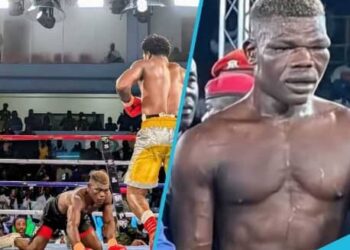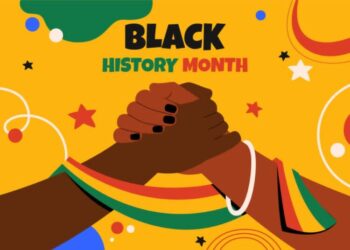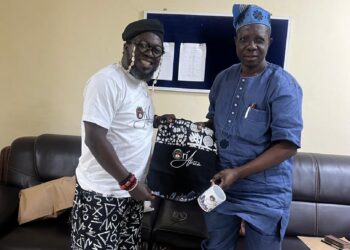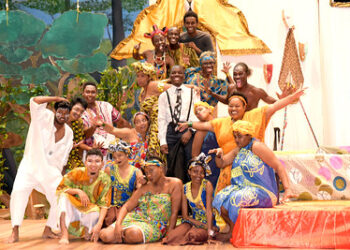The Origin
The history of Ikoyi is in practical terms, an extension of the history of Oyo Empire, the largest and most politically powerful of all the Yoruba kingdoms. This foundational truth also establishes the antiquity of the town of Ikoyi as one of the ancient towns founded by the descendants of Oduduwa, the progenitor of the Yoruba race, precisely the first generation. As it is common with most settlements within Yorubaland, the origin of Ikoy{ has also been traced to Ilé-Ife and Oyo. The foundation of the town is often attributed to Jegbe Ade, who was sald to have been a prince of ife and Oya, and a direct descendant of Oranmiyan. By this account, it is certain that lkoyi came to existence in the early phase of old Oyg Empire.

At a point in time in history, Jegbe Adé decided to leave Qyo because of vote of no confidence passed on him, in his hunting career which was beyond his control. On three consecutive occasions, Jegbe went on hunting expedition. First, he killed an elephant (erin) This was reported to his people but on getting back to the spot, the elephant had changed to a mountain. In his second hunting expedition, Jegbe Ade killed a buffalo (efon) and cut its tail as a proof for his people. They followed him to the spot but the buffalo had also turned into a hill (okiti). Likewise, the third time, Jegbe Adé killed a giraffe (agbonrin) and equally cut its tail as a proof as he did in the case of a buffalo. Surprisingly,, on getting to the spot, his people saw an anthill (Okitiogan) instead of a giraffe
The people that followed him on the three occasions to confirm the authenticity of the three wild animals’ patn as claimed by Jegbe Ade, made Alaafin realized that, itwas a fable. However, based on the belief and trust that the Alaafin had in Jegbe their oracle was consulted. Ifa then foretold that, the greatness sought by Jegbe was anchored on certain conditions. Consequently, Jegbe Adé was asked to burn his hunting regalia when next on hunting expedition and to stand by the fire till everything was bumt to ashes. He did as oracle directed. The location where the regalia was burnt was forty miles away from Oyo, very close to the river Niger or Oya. The area is today referred to as Ikoyi-Ilé.
Differently though, history also recorded the visit of all the Obas and Baales in Ekuin Osi to Oy6 – llé to pay homage to Alaafin. However, Olugbon Elenre, one of them did not return to Igbon. This made kings (Oloja) and head chiefs (Baales) decided not to go in person to Oyé -Ilé anymore.
Meanwhile, after many years, epidemic and restlessness befell the Ekun Osi towns and villages. As a result, the oracle was consulted and it was revealed that the whole problem was caused by their refusal to go to Oy6 -llé to pay allegiance to Alaafin. Subsequently, in order to remove or lessen the wrath of the gods, the kings were asked to pay homage to the Alaafin. Accordingly, the Obas and Baales in Ekun Osi decided to continue paying homage to Alaafin at Oy6-llé. Unfortunately, the Obas and Baales, numbering 1,460 lost their way, because they had desisted visiting Oy6 -Ilé for a long time. Howbeit, while in dilemma, they saw a burning fire not too far from them, and one of them suggested that, somebody should climb a tree in order to confirm what was burning. Thus, they saw a half-naked man, with only an apron (bante) on his waist standing by the burning fire. Thereafter, they approached the man, and requested that he should disclose his identity and he responded that his name was Jegbe Adé, a prince from Oyo. They inquired from him about the road leading to Qyo -llé and implored him to lead them to Oyg -lle. He agreed to lead them on the condition that his half-naked body should be covered with cloth. He demanded for the kind of paraphernalia of the throne worn by the Obas so that he would also look like an Oba. The crown, horse-tail, shoe made of beads, necklace of beads and staff of beads were given to Jegbe Adé. He then asked them to follow him. When they got to the gate of Oyo -llé, he asked them to tarry so that he would go and inform Alaafin of their arrival. Seeing them, Alaafin was thrilled and asked Jegbe Adé that ““Nibo lo gbé Koyi?”, meaning Where did you meet them? He replied that he met them where he was burning his hunting regalia. Since then, the place where he met them became ìkòyí. Jegbe Adé was made an Qba i.e. Onikoyi of ìkoyi upon the request of the Qbas and Baales from the Ekun Osi to the Alaafin. Alaafin also proclaimed that Onikoyi should be leading the Qbas and Baales of Ekin Osi to Qyo-Ilé from that time. Jegbe Ade was on the throne for many years. He was later escorted to a village called Anteté where he stopped and disappeared into the ground from where swamp of bees appeared. His son, Adebesin Olugbénra succeeded him as Onikoyi.
Culled from Biography of Chief Lere Paimó, titled: Quintessential Thespian. Authored by Sayo Àlàgbé.
….to be continued
You can get every of our news as soon as they drop on WhatsApp ...To get all news updates, Join our WhatsApp Group (Click Here)













I am proud to An Indigene of IKOYI-ILE the Ancient Land of the Greatest WARRIORS in Nigeria
I promised to IKOYI-ILE my Home Town with All my strength and God Help me 🙏